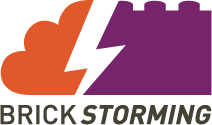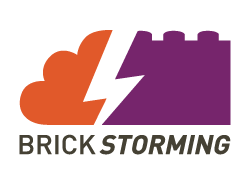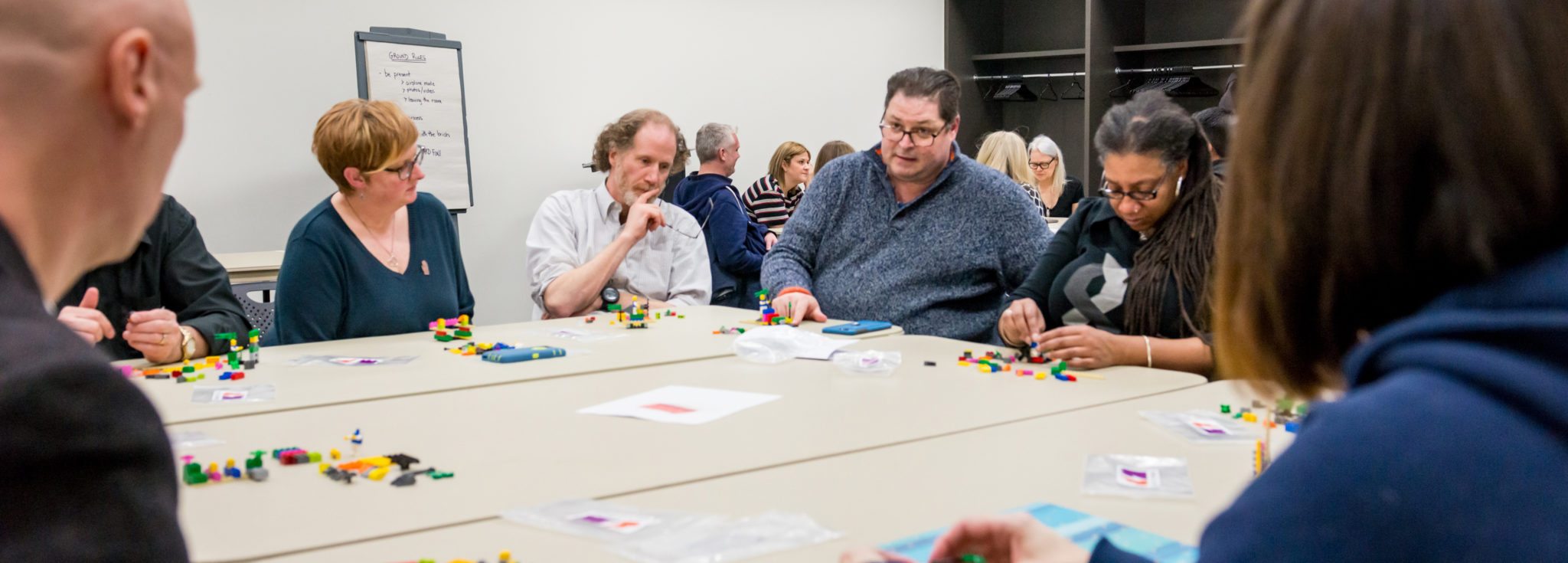
The LEGO® SERIOUS PLAY® Method
The LEGO® SERIOUS PLAY® Method is a facilitated thinking, communication and problem solving technique for use with organizations, teams and individuals. It draws on extensive research from the fields of business, organizational development, psychology and learning, and is based on the concept of “hand knowledge” [1]
Based on research which shows that this kind of hands-on, minds-on learning produces a deeper, more meaningful understanding of the world and its possibilities, the LEGO® SERIOUS PLAY® methodology deepens the reflection process and supports an effective dialogue – for everyone in the organization.
Contents
Origins
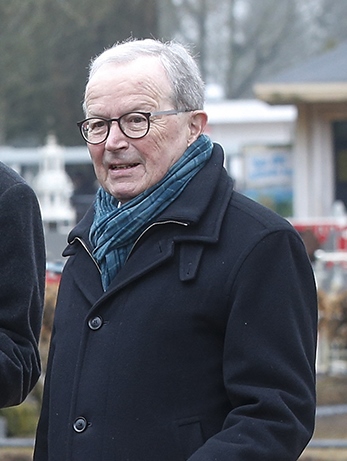
Mr. Kjeld Kirk Kristiansen
The development of the LEGO® SERIOUS PLAY® (L.S.P.) method has gone through several iterations and has involved the work of several teams. Work on the LEGO® SERIOUS PLAY® method began with the direction of the owner of the LEGO® Company, Mr. Kjeld Kirk Kristiansen. Kristiansen and the LEGO® company were looking at “the ways and techniques that he and his leadership team used when developing their strategies.” [2] Kristiansen agreed to fund a research project into possible techniques under a subsidiary called Executive Discovery Ltd. This program was under the direction of Johan Roos and Bart Victor from the IMD business school in Lausanne, Switzerland.
In this research phase groups were given a large assortment of LEGO® bricks and asked to “build their strategic ideas” [3]. There was lots of laughter in these sessions but something was not clicking. More work needed to be done.
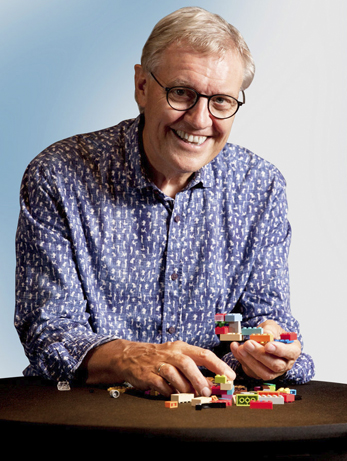
Robert Rasmussen
In 1999 Robert Rasmussen, then the head of research and development at LEGO® Dacta (later called LEGO® Education), joined Executive Discovery. Robert and small team began working on an adult environment for strategic development. As the method developed over more that 20 iterations, Professors Roos and Victor confirmed that in real-time sessions with various companies, results were robust and reproducible.
By the end of 2001 the first version of the LEGO SERIOUS PLAY® method was ready for market. Per Kristiansen joined the group. Robert and Per began training facilitators in the method. In December 2003, Executive Discovery was shut down and the LEGO® Company acquired the intellectual property [4].
A new business model for the method was introduced. It was now delivered through a license based partnership. Specialized LEGO® SERIOUS PLAY® kits could only be purchased by a partner with a licensed contract.
In 2010, the LEGO® company made access to the basics of the methodology more akin to open source. The company created a short booklet which identified the elements in the method which were now open for all to use. It was requested that all other materials be returned to the LEGO® Company. This model became known as the community model. From this model, communities of people using L.S.P. have emerged.
The Research Effort
The method was born as an action research project sponsored as a private initiative by the owner of the LEGO® Company. Executive Discovery was formed and tasked with the further development and distribution of the method. In parallel, The Imagination Lab in Switzerland did related research. The Imagination Lab’s main task was researching the use of the method for strategy development in organizations. Some of the researchers at the Imagination Lab were trained as facilitators by Executive Discovery.
The Imagination Lab ceased to exist in 2004. Independent research projects continue to be conducted at a number of academic institutions.
Academic Publications
Allègre L. Hadida. (2013). Let your hands do the thinking!; LEGO bricks, strategic thinking and ideas generation within organizations. Strategic Direction, 29(2):3-5
Andersen PH, Kragh H, Lettl C. (2013). Spanning organizational boundaries to manage creative processes: The case of the LEGO Group. Industrial Marketing Management, 42(1):125-134
Barton, G. & James, A. (2017). Threshold Concepts, LEGO SERIOUS PLAY® and whole systems thinking: towards a combined methodology. Practice and Evidence of Scholarship of Teaching and Learning in Higher Education (PESTLHE). ISSN 1750-8428
Beltrami G. LEGO SERIOUS PLAY: pensare con le mani, Franco Angeli (2017) Blair, S., Rillo M (2016). ‘SERIOUS Work: How to Facilitate LEGO SERIOUS PLAY Meetings and Workshops.’ ProMeet, London (ISBN 978-0995664708).
Bodnar, C. A., Anastasio, D., Enszer, J. A. and Burkey, D. D. (2016), Engineers at PLAY: Games as Teaching Tools for Undergraduate Engineering Students. The Research Journal for Engineering Education, 105: 147–200. doi:10.1002/jee.20106
Bond, M. (2018). Teaching Referencing and Plagiarism Using LEGO® SERIOUS PLAY®. International Journal of Management and Applied Research, 5(4), 232-237.
Botte B, Imbellone A, Marinensi G, Medaglia CM. (2016). The Ludic and Narrative Components in Game Based Learning: A Classroom Training Experience. Proceedings of the European Conference on Information Management & Evaluation, 1:82-88
Brown, N. & Collin, J. (2018). Using LEGO® to Understand Emotion Work in Doctoral Education. International Journal of Management and Applied Research, 5(4), 193-209.
Bürgi, P., and J. Roos, 2003, ‘Images of Strategy,’ European Management Journal, 2003, 21(1): 69-78.
Bürgi, P., and Jacobs, C., and J. Roos, 2005, ‘From Metaphor to Practice in the Crafting of Strategy,’Journal of Management Inquiry, 14(1): 78-94.
Burgi P, Bart V, Lentz J. (2004). Case study: modeling how their business really works prepares managers for sudden change. Strategy & Leadership, 32(2):28-35
Cantoni L., Marchiori E., Faré M., Botturi L., Bolchini D. (2009). ‘A systematic methodology to use LEGO bricks in web communication design.’ In Proceedings of the 27th ACM international Conference on Design of Communication (Bloomington, Indiana, USA, October 5–07, 2009). SIGDOC ’09. ACM, Nework,Y NY: 187-192.
Cantoni L., Botturi L., Faré M., Bolchini D. (2009). ‘PLAYful Holistic Support to HCI Requirements using LEGO Bricks’. In M. Kurosu (ed.), Human Centered Design, HCII 2009, LNCS 5619, Springer-Verlag, Berlin Heidelberg: 844-853. Frick, E., S. Tardini, and L. Cantoni (2014). ‘LEGO SERIOUS PLAY applications to enhance creativity in participatory design’. In Fredricka K. Reisman (ed.), Creativity in Business. Research Papers on Knowledge, Innovation and Enterprise, Volume II, KIE Conference BookSeries, pp. 200–210. Available at: http://www.kiecon.org/Creativity%20in%20Business%202014.pdf.
Fletcher G, Greenhill A, Griffiths M, Holmes K, Mclean R. (2016). Creatively prototyping the future high street. Production Planning & Control, 27(6):477-489
Frick, E., S. Tardini, and L. Cantoni (2013). ‘White Paper on LEGO SERIOUS PLAY. A state of the art of its application in Europe.’ Available at: http://www.s-play.eu/en/news/70-s-play-white-paper-published.
Gauntlett, D., & Holzwarth, P. (2006). Creative and visual methods for exploring identities. Visual Studies, 21(1), 82-91.
Gauntlett, D. (2007). Creative explorations: New approaches to identities and audiences. London, United Kingdom: Routledge.
Geithner S, Menzel D. (2016). Effectiveness of Learning Through Experience and Reflection in a Project Management Simulation. Simulation & Gaming, 47(2):228-256
Grey. F., and J. Roos, ‘PLAYing SERIOUSly with Strategy,’ Physics World, 2005, 18(2): 18-19.
Gridley, A. (2018). Building LEGO® Models to Teach Three-Dimensional, Mechanical Concepts in Optometry. International Journal of Management and Applied Research, 5(4), 238-244.
Grienitz V, Schmidt A, Kristiansen P, Schulte H. (2013). Vision Statement Development With LEGO® SERIOUS PLAY®. IIE Annual Conference.Proceedings, 791-79
Grienitz V, Schmidt A. (2012). Scenario Workshops for Strategic Management with LEGO SERIOUS PLAY. Problems of Management in the 21st Century, 01;3:26-35
Harel, I. and Papert, S. 1991, eds. Constructionism, Ablex Publishing Corporation, Piaget, Norwood, NJ.
Harn, P. L., Hsiao, C.C. (2018). A Preliminary Study on LEGO®-Based Workplace Stress Reduction with Six Bricks and LEGO® SERIOUS PLAY® in Taiwan. World Journal of Research and Review, 6(1),64-67.
Harn, P. L.( 2017). A Preliminary Study of the Empowerment Effects of Strength-Based LEGO® SERIOUS PLAY® on Two Taiwanese Adult Survivors by Earlier Domestic Violence. Psychological Studies, 62(2):142–151.
Heracleous, L. and Jacobs, C.D. (2012) Crafting Strategy: Embodied Metaphors in Practice. Cambridge University Press (ISBN 978-1107411692) Holland, J., 1995, Hidden order: How adaptation builds complexity.Reading, MA: Addison-Wesley.
James, A. (2013). LEGO SERIOUS PLAY: a three dimensional approach to learning development. Journal of Learning Development in Higher Education, Issue 6
James, A. (2018). Co-Design and Co-construction: LEGO®-Based Approaches for Complex, Creative Learning. International Journal of Management and Applied Research, 5(4), 304-312.
James, A. (2013). The SERIOUS Use of PLAY and Metaphor: LEGOs and Labyrinths. International Journal of Adult Vocational Education and Technology, 4(3), 1-12
Jensen, C. N., Seager, T. P., Cook-Davis, A. (2018). LEGO® SERIOUS PLAY® in Multidisciplinary Student Teams. International Journal of Management and Applied Research, 5(4), 264-280.
Kovaleski D. (2006). And Now For Something Completely Different: LEGOs. Corporate Meetings & Incentives 12;25(12):17-18
Kristiansen, P., and R. Rasmussen (2014). Building a better business using the LEGO SERIOUS PLAY Method. Hoboken, NJ: Wiley.
Kurkovsky, S. (2015), Teaching Software Engineering with LEGO SERIOUS PLAY. Proceedings of the 2015 ACM Conference on Innovation and Technology in Computer Science Education, Vilnius, Lithuania
Le Page, M. (2012). Global warning. New Scientist, 216(2891), 34-39
Lissack, M., and J. Roos, 1999, The Next Common Sense: Mastering Corporate Complexity through Coherence, Nicholas Brealey Publishing, London I(SBN 1 85788 240-7). Translated into Japanese (2001) and Estonian (2002). Nolan, S., (2009). ‘Physical Metaphorical Modelling with LEGO as a echnologyT for Collaborative Personalised Learning’. In: O’Donoghue, J, (ed). Technology-supported Environments for Personalized Learning: Methods and Case Studies. (Premier Reference Source).
Lotts M. (2016). PLAYing with LEGO®, Learning about the Library, and “Making” Campus Connections: The Rutgers University Art Library LEGO PLAYing Station, Part One. Journal of Library Administration, 56(4):359-380
Lotts M. (2016). On the Road, PLAYing with LEGOs®, and Learning about the Library: The Rutgers University Art Library LEGO PLAYing Station, Part Two. Journal of Library Administration, 56(5):499-525
McCusker, S. & Swan, J. C. (2018). The Use of Metaphors with LEGO® SERIOUS PLAY® for Harmony and Innovation. International Journal of Management and Applied Research, 5(4), 174-192.
McNamara, A. (2018). The Use of LEGO® SERIOUS PLAY® to Enable Learning Gain in Professional Actor Training. International Journal of Management and Applied Research, 5(4), 224-231.
Møller-Nielsen, L. (2009). Personal – and Shared Experiential Concepts, Department of Architecture & Design, The Faculties of Engineering, Science and Medicine, Aalborg University
Montesa-Andres JO, Garrigós-Simón FJ, Narangajavana Y. (2014). A proposal for using lego serious play in education. p. 99-107
Moreau, C.P. & Engeset, M.G. (2016). The Downstream Consequences of Problem-Solving Mindsets: How PLAYing with LEGO Influences Creativity. Journal of Marketing Research, 53(1):18-30
Mouratoglou, N. (2018). LEGO® , Learning and Facilitation: A Reflective Approach. International Journal of Management and Applied Research, 5(4), 281-289.
Nerantzi, C. (2018). LEGO® SERIOUS PLAY® As an Affective Experience In Doctoral Researchers’ Support: Tensions and New Freedoms. International Journal of Management and Applied Research, 5(4), 290-303.
Nerantzi, C. and James, A. (eds.) (2018) Discovering innovative applications of LEGO® in learning and teaching in higher education, Special Issue, International Journal of Management and Applied Research, Vol. 5, No. 4, Available at http://ijmar.org/v5n4/toc.html
Nolan S. (2009). Physical metaphorical modelling with LEGO as a technology for collaborative personalised learning. p. 364-385
Oliver, D., and J. Roos, 2007, ‘Constructing Organizational Identity,’ British Journal of Management, 18(4): 342-358.
Oliver, D. and J. Roos, 2005, ‘Decision Making in High Velocity Environments: The Importance of Guiding Principles,’ Organization Studies, 26(6): 889-913.
Oliver, D., and J. Roos, 2000, Striking a Balance: Complexity and Knowledge Landscapes, McGraw-Hill, Maidenhead (ISBN 0 07709 556-1).
Orton-Jones C. (2008), Sociable Climbing. Financ. Manage. 05:16-19
Packard, J. (2008). ‘I’m gonna show you what it’s really like out here’: The power and limitation of participatory visual methods. Visual Studies, 23(1), 63-77. doi:10.1080/14725860801908544
Peabody, M.A. & Turesky, E. F. (2018). Shared Leadership Lessons: Adapting LEGO® SERIOUS PLAY® in Higher Education. International Journal of Management and Applied Research, 5(4), 210-223.
Peabody MA. (2015). Building with purpose: Using LEGO SERIOUS PLAY in play therapy supervision. International Journal of PLAY Therapy, 24(1):30-40
Piaget, J, 1951, The Child’s Conception of the World, Routledge, London.
Pichlis D, Hofemann S, Raatikainen M, Sorvettula J, Stenholm C. (2015). Empower a team’s product vision with lego® serious play®. Lecture Notes in Computer Science (including subseries Lecture Notes in Artificial Intelligence and Lecture Notes in Bioinformatics), 9459:210-216
Pink, S. (2003). Interdisciplinary agendas in visual research: Re-situating visual anthropology. Visual Studies, 18(2), 179-192. doi:10.1080/14725860310001632029
Rasmussen R. (2006). When You Build in the World, You Build in Your Mind. Design Management Review. Summer 2006;17(3):56-63,80
LEGO SERIOUS PLAY. (2006). The science of LEGO® SERIOUS PLAY Enfield, CT: Executive Discovery LLC.
Roos, J., ‘Transformative Management Education,’ 2008, in Teaching and Learning at Business Schools: Transforming the Delivery of Business Education, Bild, M., Mårtensson, P. and K. Nilsson (eds.), Gower: 63-76. Roos, J., 2006, Thinking From Within: A Hands-On Strategy Practice, Palgrave Macmillan, BasingstokeISBN( 14039-8670-3).
Roos, J., and R. Said, 2005, ‘Generating Managerial Commitment and Responsibility,’European Management Review, 2: 48 – 58.
Roos, J, Victor, B., and M. Statler, 2004, ‘PLAYing SERIOUSly with Strategy,’ Long-Range Planning, 37(6): 549-568. Roos, J., 2004, ‘Sparking Strategic Imagination,’ Sloan Management Review,2004, 46(1): 96.
Roos, J., and B. Victor, 1999, Towards a Model of Strategy Making as SERIOUS PLAY,’ European Management Journal, 17(4): 348-355.
Roos, J., and D. Oliver, 1999, ‘From Fitness Landscapes to Knowledge Landscapes’, Systemic Practice and Action Research, 12(3): 279-293.
Roos, J., and B. Victor, ‘In Search Of Original Strategies: How About Some SERIOUS PLAY?’ IMD Perspectives for Managers, 1998, (26) 15.
Statler, M., Roos, J., and B. Victor, 2009, ‘Ain’t Misbehavin’: Taking PLAY SERIOUSly in Organizations,’ Journal of Change Management , 9(1): 87-107.
Statler, J., Jacobs, J. and J. Roos, 2008, ‘Performing Strategy: Analogical Reasoning as Strategic Practice’, Scandinavian Journal of Management, 24: 133–144
Thomson, C., Johnston, J. L. & Reid, H. (2018). Rich Stories: Embedding LEGO® SERIOUS PLAY® into Undergraduate Medical Education. International Journal of Management and Applied Research, 5(4), 313-325.
Tuominen PP, Ascenção MP. (2016). The hotel of tomorrow. Journal of Vacation Marketing, 22(3):279-292
von Krogh, G., and J. Roos, 1995, Organizational Epistemology,Macmillan, Oxford (ISBN 0-312-12498-8).
von Krogh, G., Roos, J., and K. Slocum, 1994, ‘An Essay on Corporate Epistemology’, Strategic Management Journal, Special Issue on ‘Rethinking Strategy – The Search for New Strategy Paradigms’, 15: 53-71.
Wengel Y, McIntosh AJ, Cockburn-Wootten C. (2016). Constructing tourism realities through LEGO SERIOUS PLAY. Annals of Tourism Research, 56:161-163
Wolfe J, Kriz W, Geithner S, Menzel D. (2016). Effectiveness of Learning Through Experience and Reflection in a Project Management Simulation. Simulation and Gaming, 47(2):228-256
Zenk, L., Hynek, N., Schreder, G., Zenk, A., Pausits, A. & Steiner, G. (2018). Designing Innovation Courses in Higher Education Using LEGO® SERIOUS PLAY®. International Journal of Management and Applied Research, 5(4), 245-263.
References
1. “Association of Master Trainers” (http://seriousplay.training/).
2. Kristiansen, P., and R. Rasmussen (2014). Building a better business using the LEGO SERIOUS PLAY Method. Hoboken, NJ: Wiley. Page 1, para 4.
3. Kristiansen, P., and R. Rasmussen (2014). Building a better business using the LEGO SERIOUS PLAY Method. Hoboken, NJ: Wiley. Page 2, para 4.
4. Kristiansen, P., and R. Rasmussen (2014). Building a better business using the LEGO SERIOUS PLAY Method. Hoboken, NJ: Wiley. Page 6, para 2.
External Links
- Official website LEGO® SERIOUS PLAY® (https://www.lego.com/en-us/seriousplay)
- Official website The Association of Master Trainers (www.seriousplay.training)
- Official website LEGO® SERIOUS PLAY® Research Community Portal (www.lspresearch.org)
- Official website Rasmussen Consulting (www.rasmussenconsulting.dk)
- Official website Trivium (www.trivium.dk)
